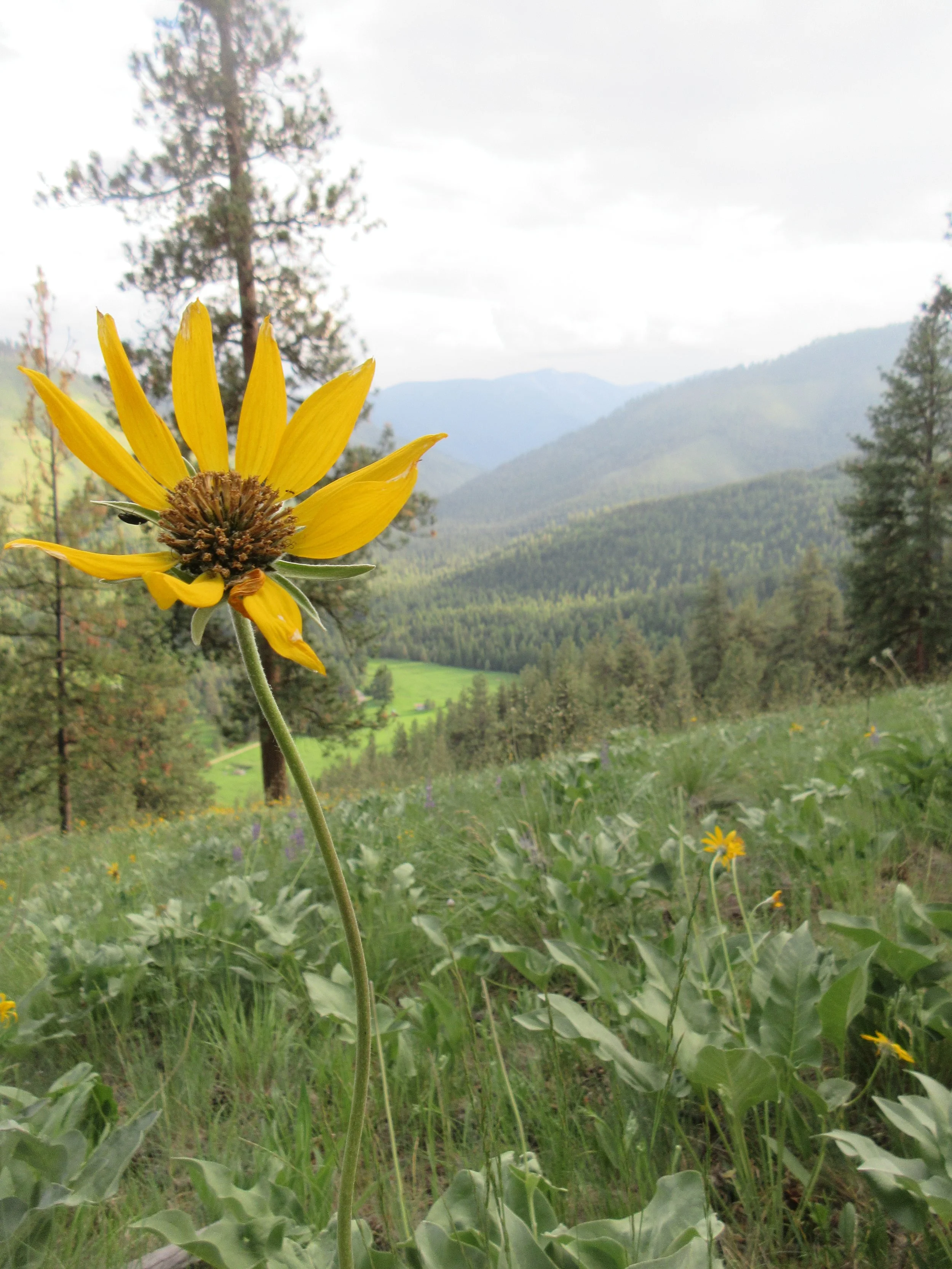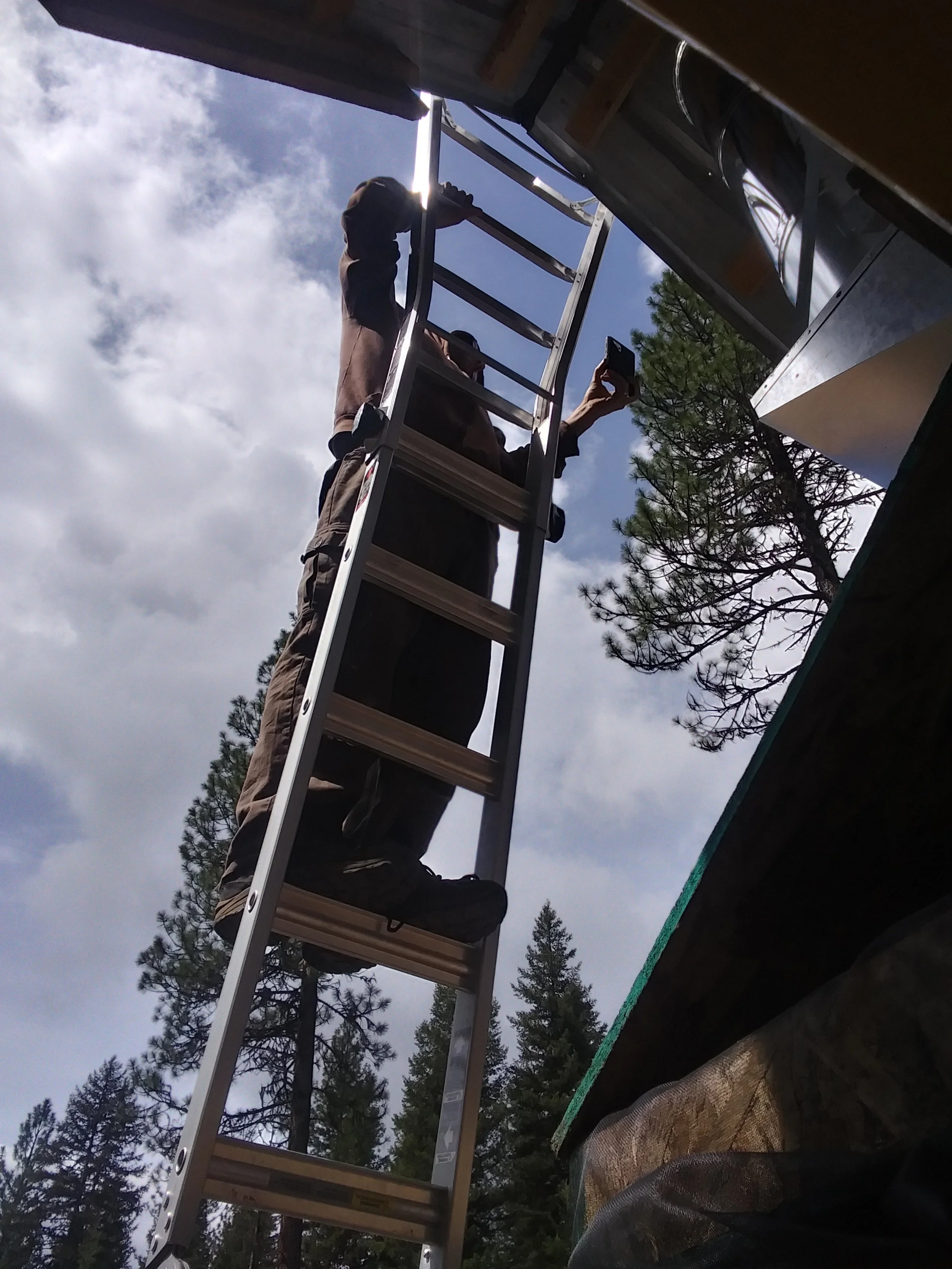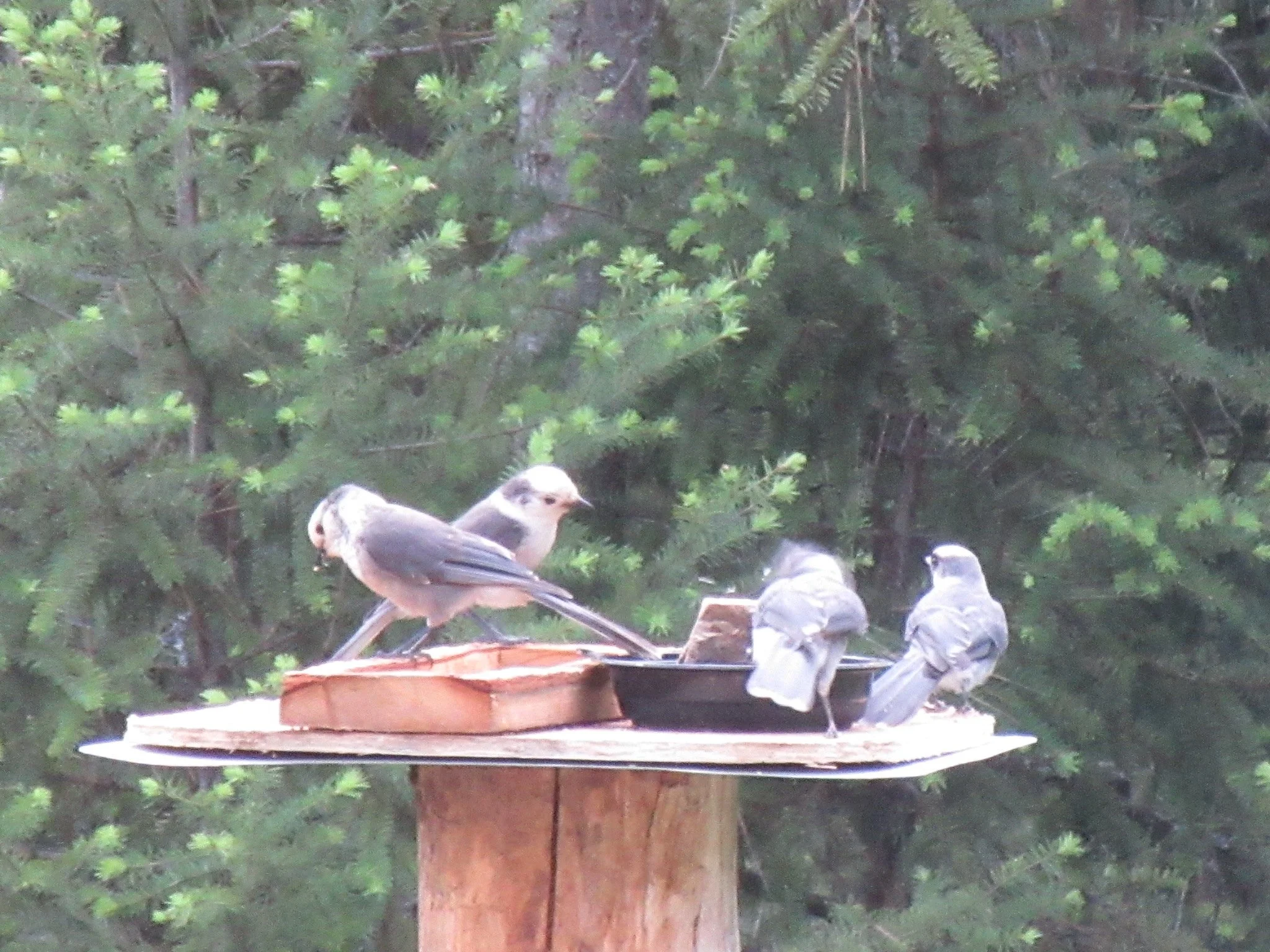Systems & Set Ups
Here at EM, we are investing our energy into cultivating both a mindfulness practice center and a lifestyle that promotes simple living, with a closer connection to the outdoors. As an off-grid homestead and aspiring practice center, sans on-site water, we are active in the process of figuring out our systems, in order to reside here and be a place of welcome for others.
Here’s a rundown of our current systems & set ups:
Water: Right now we haul water. Digging a well would be possible, through super pricey, given the depth we would likely have to go. We haul drinking water from Missoula once a week and we also grab water from a potable water spigot at a nearby local National Forest campground, which is just a short drive from EM. The campground is seasonal, so water access there is limited from mid-May to mid-September. We have a 50-gallon drum for water storage and a hand siphon pump (to get the water back out of it), along with a few smaller portable containers. Our set up is working for now, but we’re also seasonal. When we get to the point of being able to winter over here, we’ll need to upgrade our water situation in some fashion. Right now our water storage and water usage very much hinges on being outside, which would not be a thing come winter time.
We have an outdoor foot pump bucket sink for washing hands & dishes. Inside the cabin, we have a 6-gallon container for dispersing drinking/cooking water, and outside we have a 5-gallon container for dispensing drinking water. Since adding the outdoor container, I find that I fill the inside container approximately once a week.
For showering, we use a solar bag shower set up. We also have lovely friends & family that allow us use of their showers in Missoula, where we venture frequently. In a pinch, the local truck stop in Superior has pay showers, though we have yet to utilize that option.
Bathroom: When we moved on the land in July of 2022, we dug a pit style latrine, just to get up & running on the quick. But this year, when we got home in the spring, we upgraded to a compost toilet system. Mike built a new outhouse and we both read up on how to compost humanure. So now we’re up & rolling with this new land-friendly system, which needs only enough water to clean out the buckets after depositing the contents into our compost bin.
Electricity: We have two 200-watt PV panels as part of our solar power set up, and two 12.8-volt lithium-iron batteries. Right now it’s enough to power up everything we need, but our needs are fairly minimal at this point. And again, we’re seasonal. I reckon we wouldn’t get enough sun in the winter to keep up with our usage. We’d likely need to supplement our system with a gas-powered generator to juice up the batteries from time to time, or add additional batteries.
Heat & AC: For heat we use a wood stove, and for AC, well, that was just a little joke on my part. Turns out, there’s no AC in the woods when you live off-grid. When it was super hot last summer, our favorite and oft-used method for cooling down involved taking a 5-min drive to hop in the river. We’re darn lucky to have a river so close by with - bonus! - a really great swimming hole.
Cooking & food storage: We’re using a 2-burner Coleman propane camp style stove. We bought an adapter for the small green propane bottles it runs on, so we can fill the tanks on our own using our larger propane tank. Using the stove every day for boiling water for tea/coffee, making breakfast and cooking dinner, we go through a one-pound bottle of propane about every 4-5 days. We’re using a cooler for refrigerating food items. On average, we add one block of ice every other day (cuz it’s a cheaper cooler and not well insulated). We’ve been researching other methods but have yet to land on one. It’s likely that either a small propane fridge or a small well-insulated electric fridge are in our near future. Cuz let’s face it, no one enjoys needing to be on constant ice watch duty.
Trash & recycling: We haul our trash & recycling. Since our trash output is relatively low, we’ve been managing to take small bags of trash with us when we go to town and simply use gas stations, truck stops or rest areas for trash disposal. For larger items, we have a transfer station situated about 15-minutes away. For $26.75 (their minimum rate), one can throw away a cubic yard of whatever you’ve got (unless it’s an appliance or tires). The small town of Superior has a recycling drop off open two days a week, so we either take our recycling there or cart it to Missoula.
Mail: Did I mention we live off-grid in the woods and don’t have a physical address? Turns out, it’s really hard to deliver mail when you don’t have an address to deliver it to. It suits us just fine for the most part. We have a PO box in Missoula that we check once a week. It’s really only a drag when we get Amazon packages delivered, and we have to wait to go to town to retrieve them. We could get a PO box in the nearby town of Superior, but since we’ve been wintering at Deer Park Monastery, we’re fortunate to have friends in Missoula that will grab our mail for us while we’re away. If we had a PO box in Superior, we wouldn’t have the benefit of knowing anyone nearby who would be willing to collect our mail for us over the winter.
Wi-fi & cell service: We’re working on it. 2.5 miles down the road there is strong cell service and 4G access all the livelong day. But back in the woods where we are, we get super weak, unreliable service. But we DO get it. Thus, we’re making our way through different cell boosters to see what we can do to improve our situation on this front. We’re on our 2nd booster right now, which we’ll be taking back tomorrow, and we have a 3rd more powerful one on the way. Interestingly, I’m finding this the hardest one to contend with. It would be really nice to have wi-fi, as a lot of what I do requires its services. We’ve researched satellite internet and we may go in that direction, but we’re first trying to see if we can get a booster to get us decent 4G, as it would keep our monthly costs down and may provide us with enough of what we need on the internet access front.
Mike installing our cell booster and testing our signal strength
Local amenities: We lucked out on having a lovely small town close by, as that was not on our list of criteria when we were land-searching. In 10-minutes, we can be in Superior, Montana, which for a town with a population of 800, has a surprising amount of amenities, including: a grocery store, Ace hardware, a building supplies center, public library, laundromat, pizza place, a diner, and the county hospital, with a walk-in clinic. It’s been a definite bonus, especially given that we’re greenhorns to living off-grid.
Whelp, that about covers all the main points. We’re working with a lot of temporary set ups right now, but all in all, we have everything we need. We’ll keep slowly figuring out, improving, and/or dialing things in as we go. While it requires more labor to live how we’re living, it also means we can work less (jobs for money, that is). And, I’ve been really appreciating having a closer connection to our living systems. It helps me not to take so much for granted. I’ve also been rather surprised to discover how little we actually really need, when it comes to things like water and electricity. When it’s free-flowing in town, it’s easy to use it without any thought. But when you haul water and depend on the sun for power, it’s a whole different story.
Sometimes thoughts drift in like: What will we do if one of us gets really sick? or What will we do if when we get older this way of living gets too hard? or What if a forest fire rolls through? But I practice not to entertain these worries for very long. It’s good to have a plan, yes, but to hang out in the worry place does not serve me well, so I don’t linger there. Truth is, no matter what kind of lifestyle we’re living, the What if’s can abound if we let em. There’s no one way of living that has the market cornered on assurances of really any kind. So, one step and one day at a time, we’re starting where we are, and doing what we can to manifest a simple life in the woods, with the hope that others on the path of practice will want to journey along with us, in one way or another.
P.S
Critters big & small: It’s worth mentioning that we’re still learning how to best dwell alongside and be good neighbors to all of the critters of the forest. Our systems of living very much involve things like critter proofing; not leaving food stuffs outside of the cabin; purchasing products to keep ticks at bay; and a number of other things, which include sometimes spraying to repel ants and setting out traps for yellowjackets. We also try to remember to bring our bear spray with us when we go on walkabouts. Between the local black bears, dear, coyotes, ticks, yellowjackets, mice, ants, and other creatures of the woods, we’re surrounded by an active community of beings, some of them much more appealing than others.





